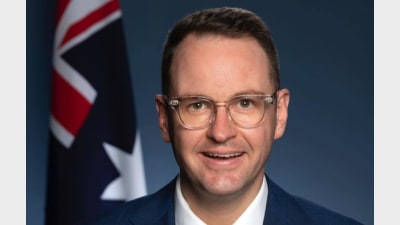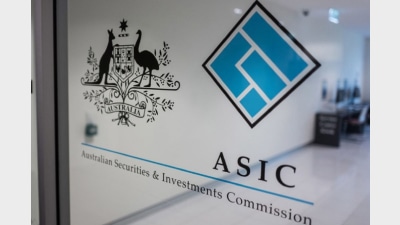Superannuation funds looking for alternatives with their asset allocations


Continuing volatility in traditional equities markets has encouraged superannuation funds to maintain their strategic allocations towards alternatives.
As superannuation funds continue to grapple with equity markets which remain uncertain, the reality is that they must look for investment alternatives.
Indeed, with so few sure bets in listed markets, alternative investments such as infrastructure, private equity and hedge funds are playing a vital role in portfolios.
And yet, taking into account that their performances can be as diverse as the asset class itself, Martin Goss, senior investment consultant at Towers Watson, believes there is a need for discrimination.
“Because of the diversity inherent in alternatives, often what you’ve selected to do within the asset class is as important as the asset class itself,” he said.
“But generally, the sort of thing that we’re seeing is private equity performing pretty well, particularly given that listed equity markets have been weak.”
“Now, you can never be entirely sure what impact a lack of valuations is likely to have when it does flow through,” Goss continued.
“However, the sector has been doing reasonably well in terms of some of its exits.”
“It’s not that it’s just frozen and everything’s slowed down; I think there’s been less into it but there’s also been a reasonable number of successful exits.”
Looking towards infrastructure, Goss said that its performance had been similarly robust.
“But, in some ways, it’s being supported by the fact that risk-free rates have been dropping, that bond yields have been dropping,” he said.
“So there’s been some support there.”
“There certainly hasn’t been a run away from risk that has done any damage.”
Alternatively, van Eyk chief executive officer Mark Thomas warned that infrastructure performance was cyclical.
“So when governments have weak fiscal positions, you get less demand for infrastructure projects to be built because of the payback debt,” he said.
“Generally, infrastructure works off traffic of some form, so if it’s airports or motorways or the like, you’re wanting volume to be strong.”
“And I think it’s fair to say that volume has been weaker because of things like natural disasters, the tsunami in Japan – there’s been an enormous pushback on air traffic,” Thomas continued.
“So it’s done okay, but infrastructure certainly hasn’t been at its best in the last few years.”
“For both direct infrastructure and property, as you’ve had weaker economic growth globally, they’ve generally been that much softer.”
On the hedge funds side, Goss delivered a less than stellar report card, though he admitted that any assessment was heavily dictated by an investor’s perspective and chosen strategy.
“Generally speaking, hedge funds probably haven’t achieved what you’d be hoping for,” he said. “Now, to an extent, that may well be because some of them still have quite a lot of beta.”
“And with hedge funds, there’s such a massive universe that if you look at some of the hedge funds that target specific strategies or themes, you could actually be really happy with what you’ve got,” Goss added.
“I certainly know that some of the global macro funds have actually had a fantastic last three or four years.”
“They’ve been the best place to play because they’ve been able to look at where people’s view on risk is, their views on risk-on and risk-off, and play to that rather than just have the market risk play them.”
Illustrating that differing perspective, Blue Sky Alternative Investments managing director Mark Sowerby argued that recent performance had been reasonably solid.
“Hedge funds are doing pretty well, but then I think they’ve always done pretty well,” he said.
“I think that hedge funds have unfairly been tarred with the illiquidity brush and a whole range of other things, but the reality is that investors demand liquidity from strategies that can’t deliver it.”
“Then, to raise that capital, fund managers will meet demand with promises they can’t keep,” Sowerby added.
“And so my personal view is that it’s better to say ‘look, I accept that there’s not enough liquidity in a particular strategy but I can live with that’ or to not invest at all.”
“I’d say hedge funds have outperformed equity indices for the past five years and will probably continue to do so, so if you’re in the right strategy, I think it’s a great place to be.”
But while infrastructure, private equity and hedge funds may be the focal points within the alternative investments space, Goss was quick to point out that the sector’s appeal and value went well beyond its more common areas of investment.
“The biggest thing about alternatives is the ability to realise that there may be a niche theme at any one moment that people can invest in and benefit from,” he said.
“You just can’t do that in the listed market.”
“At the moment, for instance, people have said that if they can get access to a term deposit, they’ll do that, or if they can get access to bank loans, they’ll do that,” Goss explained.
“And typically those sorts of things are either constrained or they don’t fit into normal portfolios.”
“In some ways you call them alternative simply because they’re different to how you normally invest.”
In fact, for Goss, it is in those sorts of immediate and circumstantial opportunities that the true strength of alternative investments can be found.
“It’s almost like being willing to invest off the standard list – that’s what alternatives are about,” he said.
“Having different return drivers is certainly one part, but that flexibility to see opportunities and invest has definitely been the other part.”
So as a subset of investments in which flexibility is a key advantage, alternatives have clearly benefited those fortunate enough to have been in the right strategy at the right time. Yet returns and performance are only half the story.
In the fee-conscious superannuation environment that Stronger Super has created, the underlying cost of alternatives has become a point of contention, but for Michael Coop, head of alternatives at Ibbotson Associates, there is one key question being asked.
“Australia has always been one of the more fee-conscious markets, but I’d say there’s now an even greater focus on value for money,” he said.
“The question people are really asking is ‘is it worth it?’”
“And you have to understand how that type of investment will benefit the total portfolio risk or return,” Coop continued.
“People are looking at whether they can get the same effect in a more cost-effective way, which means they’re basically asking whether there’s some kind of customised passive strategy that they can use to get the same outcomes.”
“Or, alternatively, is it all skill-based?”
Coop pointed to what he termed good, discretionary global macro hedge funds as an example.
“So that sort of investment is very difficult for someone to replicate,” he said.
“Whereas in infrastructure, where most of the return comes from holding a number of individual assets, you can create your own strategy, do something very similar and you don’t have to pay active fees for the privilege.”
“But the other thing is, in answering this question ‘is it worth it?’, people are paying more attention to how different these so-called alternative investments are from what they already own in their equity and fixed income portfolios,” Coop added.
“So in many cases, a lot of what was previously marketed as alternatives were really things you already owned that had been carved out.”
“Things like emerging market equities or various types of corporate bonds that really weren’t all that alternative.”
Putting forward a similar view, Goss said that it was important that investors focused on net performance first and foremost.
“So having to think about gross almost separates net performance from the best investments and that, I think, is a major issue,” he said.
“If you’re constrained because a particular investment has high fees, if you can’t trade those fees off against what may be even higher gross performance and see that net, you get a really good outcome, then that’s a negative for a good quality investor.”
“But the flipside is that, historically, many alternative assets have been more expensive than they should be,” Goss continued.
“And I think you can see that when we look at remuneration through the investment world generally.”
“It’s too high for what most people would say is fair, and so the pressure on these investments – to say that that it’s a good idea but it’s only worth this much, not this much higher – is actually positive.”
For Coop, a sensible fee focus is forcing super funds to determine whether their investment in alternatives is really giving them the diversification they were hoping for.
“So I think, in a way, the fee question is good because it’s forcing people to take a much closer look,” he said.
“They’re asking themselves if it’s really giving them a source of diversification, whether it’s giving them a different source of return that they couldn’t otherwise get more cost-effectively.”
“But what it really means is that the better funds in the industry will still use alternatives, even if they cost more than other nominally active/passive products,” Coop continued.
“The difference is that they’ll be far more focused on diversification than some of these so-called alternatives that were used when the industry hadn’t thought as hard about it.”
“And for those funds that ignore alternatives altogether, I think they’ll actually end up taking more risk than other funds; they’ll have more volatile returns and they’ll have larger losses in periods of market crisis.”
Yet investors’ concern over alternative investment fees is about much more than net return. The complexity of fee structures is also cause for hesitation, particularly where a superannuation fund investor may be charged for money committed rather than money invested.
However, for Goss, it is up to the investor to go into investments, their fees included, with their eyes wide open.
“There’s some investments where people say ‘look, this is the only fee structure, do you want to use this or not?’” he said. “And people have got to go in with their eyes open with respect to those fees.”
“But even then, you still have to ask yourself what that fee actually entails, think through the scenarios, and then assess whether that’s a fair cost to access the investment,” Goss continued.
“So of the value that they’re generating, are you getting at least two thirds of that value?”
“Because if it’s structured so that you’re giving away more than half of it, and in some scenarios more than all of it, that clearly isn’t fair.”
Offering the counter argument, Sowerby pointed out that Australian investors rarely considered the fund manager’s perspective.
“So if the fund manager has to feed a bunch of talent and keep them alive and keep them secure and keep their teams together, then there’s a level of income that they need to achieve that,” he said.
“And I think most fund managers are really happy to back their performance as long as they can cover their costs.”
“In fact, the reality is that most alternatives strategies, with the exception of hedge funds which are mostly pretty scalable, don’t have the ability to take on millions of dollars,” Sowerby continued.
“They tend to be in the 50’s to 100’s of million dollars range in terms of their maximum capacity, so they’re limited opportunities and usually relatively niche compared to the volume of capital that’s around.
“So for those groups and that talent, they need to be able to achieve a level of fee structure that rewards them for that.”
The challenge, according to Sowerby, is for those so-called talented people to actually be talented.
“But if talent is good enough, it will attract money at whatever fee structure it offers,” he said.
“Right now, I think that capital is king and so I think fund managers are looking for ways to survive, not necessarily prosper, and so are more likely to do deals or to offer lower fee structures to meet those needs.”
“Yet in saying that, they would probably like to see more capital committed as a result,” Sowerby added.
“You’ve then got a larger base to work with and obviously a higher performance fee to work with as well.”
“But if you’re in a strategy that’s limited in its capacity, if it can only deploy $600 million for instance, then the reality is that you’re going to want to get paid 2 per cent for that.”
Evidently, the bottom line for alternatives is that the underlying proposition must stack up.
And while such a statement holds true for all investments, irrespective of asset class, it is clearly one that will dictate the role of alternatives within super fund portfolios going forward.
Indeed, with the super industry’s next frontier acknowledged to be post-retirement and dealing with longevity risk, Thomas said that a considered allocation to alternative investments was likely to be vital.
“If people are still relying on the old 60 to 70 per cent equities model, then they’re relying on the market going up,” he said.
“And we certainly had that from 1980 through to 2005/06, with falling inflation, falling interest rates, increasing profit share, expanding P/Es; just being in the market worked well.”
“That was beautiful but we’re now in a period where we could have weak economic growth for some time,” Thomas continued.
“We’ve got the developed world having to retire debt at the government level, they’re hitting their fiscal cliff in the US, in Europe they’ve got austerity in place, even China’s struggling a bit at the moment.”
For all those reasons, Thomas said that super fund investment strategies had to change.
“There is unreasonably low profit growth that we’re going to get as an economy,” he said. “And it will have to translate into the share market.”
“So if you’re relying on that share market, or even the bond market, as your traditional source of return – when they’re not going up due to stuffed fundamentals – where’s your return going to come from?”
For Coop, the obvious answer is alternatives.
“To have staying power, a portfolio needs to combine both a sizeable and growing level of income as well as capital value rise, at least in line with inflation,” he said.
“As well as that, avoiding big losses is also key for retirees who are going to be selling assets to fund their retirement.”
“And when you think of those three things, alternatives can be helpful in achieving each of those goals,” Coop continued.
“Firstly, some will offer income streams, like insurance-linked bonds, while others will offer capital preservation and growth over time but with a lot less risk than equities – a conservatively managed hedge fund portfolio, for example.”
“Still others offer both an income and fairly conservative but consistent growth over time, like infrastructure, but any way you go, you’d be mad not to be allocating money to things that so clearly improve overall portfolio performance.”
Recommended for you
In a recent statement, shadow assistant minister for home ownership and Liberal senator for NSW, Andrew Bragg, accused ‘big super’ of fabricating data attributed to the Reserve Bank of Australia to push their agenda.
A “concerning” number of Aussies don’t know what they pay in super fees, a young super fund has said.
The corporate regulator has shared some ‘disappointing’ findings upon reviewing the public communications of more than 20 trustees with regards to death benefits.
According to the industry body, funds should have an obligation to transfer members in failing products to better-performing products in a timely way.













Add new comment